Results 3,551 to 3,560 of 12096
Thread: Anandtech News
-
01-09-14, 12:30 AM #3551
Anandtech: OriginPC: New Genesis and Millennium Systems (and More)
OriginPC is a boutique PC system integrator with a twist: they ship their systems in gigantic wooden crates designed to kill reviewers like Dustin (RIP). The past couple of years they’ve apparently been working on their own custom chassis design, with the intent of building one chassis to satisfy the demands of the vast majority of their clients. Whether or not they will succeed is yet to be determined, but at CES this year they’re ready to unveil the fruits of their labors. The new chassis features variable mounting – a term coined by OriginPC to talk about their case – which simply put allows you to orient the motherboard and internals in one of four directions: standard ATX, inverted ATX (basically flip the motherboard to the opposite side of the case), 90 degree (e.g. vertical GPUs and expansion slots), or 90 degrees inverted (vertical expansion slots with the motherboard on the opposite side of the case). This allows users to have their system built in whatever orientation fits their particular needs best – e.g. if you have your case against the wall to the left of your desk, the “inverted” orientations will allow a case window to still show the interior.
Besides the variable mounting, the new chassis has plenty of other features. For one, the bottom of the chassis can be replaced on the Millennium and Genesis, so the top portion of the case is the same on both systems. The Millennium doesn’t have anything extra on the bottom, while the Genesis has three options for the bottom compartment. You can install a custom water-cooling radiator and dual 3x120mm radiators, or a storage compartment with one of two setups: it can hold up to 14 3.5” drives, or you can flip things around and install up to 24 (possibly more?) 2.5” SSDs. The full-tower expansion kit that converts the Millennium into the Genesis will also be available for purchase. Either case has a variety of mounting options for radiators as well, with space for top, bottom, rear, and front radiators of varying sizes.
Other features include the ability to support up to 4-way SLI configurations (in any orientation), a smart fan controller (with a minimum fan speed of 30%, so that you don’t accidentally cause your system to overheat), remote controlled LED lighting, a dual-hinge front panel that can be configured to open to either the right or the left, five hot-swap bays, up to E-ATX motherboard support (as well as support for dual-socket motherboards), and probably some other items I missed. It’s a very impressive feat of engineering, certainly, though perhaps not for everyone considering the size, styling, and price. You can view OriginPC’s video introduction to their new case for perhaps a better understanding of how things work, and Origin has also posted (better quality) pictures of the case. You can completely customize just about any aspect of a new desktop/workstation built using the new chassis, with pricing starting at $1629 for the Millennium and $1849 for the Genesis.
Other items shown at their suite included a sneak-peak of upcoming 3U and 4U rack mount workstation/server chassis, as well as their customizable notebook based on Clevo’s P157SM (but with Origin’s log on the touchpad and a custom cover, with perhaps a few other minor tweaks). OriginPC definitely isn’t in the business of selling budget hardware, but if you’re after customization and perhaps something different in terms of a PC chassis, they’re worth a look.
Gallery: OriginPC: New Genesis and Millennium Systems (and More)_thumb.jpg)
_thumb.jpg)
_thumb.jpg)
_thumb.jpg)
_thumb.jpg)
_thumb.jpg)

More...
-
01-09-14, 03:32 AM #3552
Anandtech: Swiftech: Enhanced Liquid-Cooling Options
Swiftech is a fairly well-known name in the realm of computer cooling, founded nearly 20 years ago by Gabriel Rouchon (but not officially named Swiftech until 2001). While they have various other products, at CES their focus is solely on the world of liquid cooling. Last year they unveiled a new product similar to a closed-loop-cooling (CLC) kit that incorporated a pump on the CPU waterblock, with the interesting twist being that it came with quick disconnect valves and the pump is powerful enough to drive a full liquid-cooling setup with GPU(s), chipset, and of course CPU. This year, they’re going in a similar route only now the pump is being integrated onto the radiator.
The H220X comes with a compact 2x120mm radiator and fans with an integrated high power pump, reservoir, and CPU waterblock. There’s a window as well to show the current coolant level and LED lighting. It’s shipped in a ready-to-install state with the coolant pre-filled. The expected delivery date is March 2014, with an MSRP of around $150. Prototype models with 1x140mm and 2x140mm form factors were also present but not yet ready for launch.
Swiftech had several other items on display as well, including a new Swiftech designed ultra-high pressure pump, the MCP50X. Swiftech had the new pump and their current MCP35X set up in a demonstration showing that the new pump provides roughly 20% more pressure. I also noticed that the new pump runs cooler to the touch than the existing pump. Swiftech didn’t want to provide an MSRP yet, but it’s also expected to ship at the end of March. There is also a new Apogee XL waterblock for Ivy Bridge and Haswell that features a higher flow rate than previous Apogee blocks, and going with the LED lighting on the H220X there’s now LED lighting on the waterblock that pulses “like a heartbeat”. Continuing the theme, new Komodo GPU cooling blocks are available for AMD’s R9 290/290X GPUs and NVIDIA’s GTX 780 Ti. Both blocks feature a large window to show the coolant and LED lighting (that can be changed through the use of colored plastic strips to red, blue, or green along with white).
Wrapping things up, there’s a new Maelstrom V2 5.25” bay reservoir (again with LED lighting) that’s paired with the new MCP50X pump. You can see a shot of this in the gallery where it was hooked up to a couple of R9 290X cards with the Komodo coolers, an Apogee XL CPU cooler, and three 3x120mm radiators. Also on display are quick disconnect fittings with a new black chrome finish that some users are certain to love. While most people will never use liquid-cooling on their PCs, the segment of the market that wants to improve cooling and lower noise – and maybe add some visual flair to their PC in the process – will always appreciate new liquid-cooling solutions and that’s what Swiftech is delivering.
Gallery: Swiftech: Enhanced Liquid-Cooling Options_thumb.jpg)
_thumb.jpg)
_thumb.jpg)
_thumb.jpg)
_thumb.jpg)
_thumb.jpg)

More...
-
01-09-14, 01:00 PM #3553
Anandtech: Samsung SSD 840 EVO mSATA (120GB, 250GB, 500GB & 1TB) Review
Samsung is in a unique position in the SSD market. It’s the only company in the consumer SSD business with a fully vertically integrated business model and zero reliance on other companies. The controller, NAND, DRAM, firmware and software are all designed and produced by Samsung, whereas other companies only focus on their core strengths and outsource the rest. The strength of Samsung's business model has been time to market and the 840 EVO mSATA is yet another fruit of that. Read on to find out more!

More...
-
01-09-14, 09:00 PM #3554
Anandtech: AnandTech Mobile Show at CES 2014 Video Live Now
Earlier this week, Brian and I sat down at recapped some of the recent mobile announcements at CES, as well as other things we'd been working on over the holidays. We talked about the new Mac Pro, NVIDIA's Tegra 5, the new Pebble, Brian's first Sony smartphone review sample, the big T-Mobile announcement and more. In addition to that, we were able to grab Intel's Hermann Eul (VP & GM of Intel's Mobile/Comms group) for about 10 minutes and got him to talk a bit about SoFIA, 64-bit Android and more.
I had hoped to get this up right away, but getting access to enough bandwidth to download the 3GB source and then put it on YouTube in between meetings was far more difficult than I expected (particularly during the day when available bandwidth at CES was beyond limited). 
The video is embedded below, I hope you all enjoy it! 

More...
-
01-10-14, 01:00 AM #3555
Anandtech: The AnandTech Podcast: Episode 27 - CES 2014 Mobile Show
After popular demand, here is our CES 2014 Mobile Show in podcast form.
Recorded live from CES 2014, on this episode Anand Shimpi & Brian Klug discuss Intel's mobile product launch with the VP & GM of Intel's Mobile Comm. group, Hermann Eul. Anand & Brian also discuss the recently launched Mac Pro, Qualcomm's Toq and other smartwatches, Asus's ZenFone smartphones, Brian's switch from AT&T to T-Mobile, Sony's latest smartphones, NVIDIA's Tegra K1 & Project Denver, and the fluctuating CPU core counts in CPUs.
The AnandTech Podcast - Episode 27
Featuring Anand Shimpi, Brian Klug, & special guest Hermann Eul
iTunes
RSS - mp3, m4a
Direct Links - mp3, m4a
Total Time:  47 minutes 30 seconds
Outline h:mm
Interview: Intel's Hermann Eul - 0:00
Mac Pro - 6:42
Smartwatches - 12:36
Asus ZenFone and other Asus smartphones - 21:54
Brian Switches To T-Mobile - 28:11
Sony Smartphones - 33:10
Motorola Smartphones - 36:18
NVIDIA's Tegra K1 & Project Denver - 38:04
Mobile SoC CPU Core Counts - 46:04

More...
-
01-10-14, 02:30 AM #3556
Anandtech: GIGABYTE at CES 2014: BRIX MAX SFF NAS, running Android
GIGABYTE is attacking the NUC sized form factor with seemingly every idea on the market.  This is a good thing in a market that loves innovation.  We have seen the original BRIX, BRIX 2 updated with newer processors, and Ganesh published part one of this BRIX Pro review earlier this week, part two coming shortly.  So while I am not at CES, I have been monitoring the airwaves for information and one of the units that stood out is the BRIX MAX, a Haswell based BRIX running Android aimed at being a NAS Server for the home.
Image courtesy of PC PerspectiveThe BRIX MAX is a large BRIX, with space adjustable for four 2.5” drives.  Colin from GIGABYTE stated that the BRIX can enable four 1TB drives, although 2.5” drives now come in 2TB versions, so I would be interested if it can fit the larger size drives.  Reports vary on what CPUs are going to be available inside, but GIGABYTE is saying they will come equipped with IRIS Pro graphics solutions.  Interestingly enough, the chipset is also a discussion here, as in order for GIGABYTE to fit four drives in they would have to be using either SATA ports on board or a backplane to fit the drives into, similar to what some chassis do.
From other images we can see an IR receiver on the front, gigabit Ethernet and HDMI on the back, as well as a variety of USB ports.    The fact that GIGABYTE are quoting Iris Pro graphics means that the system seems overly powerful for what it needs to do, which can suggest many things: users can install another OS and use the device as a normal PC, users can use the BRIX to transcode if needed, there is scope for HTPC duties and so on.  Along with Ethernet, the unit is quoted as supporting 802.11n, although I might imagine that could be bumped up to dual band 802.11ac by the time it hits the market.
GIGABYTE is using this initial demo model at CES to gauge the reaction of media and of readers alike, and are welcome to suggestions/opinions and requirements that any AnandTech readers have.  I know Ganesh mentioned something about making the drives hot-swappable would be good, which I can see the point of!  Personally I would make sure that it is able to fit the slightly taller 2TB 2.5” drives, and RAID 5 and 6 should be standard options in my opinion.  Perhaps an eSATA with port multiplication should be here as well.  GIGABYTE would love to hear your comments!

More...
-
01-10-14, 07:30 AM #3557
Anandtech: NVIDIA Announces Winter 2014 Game Bundle: Assassin’s Creed IV: Black Flag
With NVIDIA’s previous holiday 2013 GeForce bundle having expired with the end of the year, NVIDIA has announced that they will be running a winter 2014 bundle to replace it.
The new bundle will be a simpler bundle, composed of Assassin’s Creed IV: Black Flag and a SHIELD discount. With the winter game release lull upon us, Assassin’s Creed IV remains NVIDIA’s flagship game under The Way It’s Meant To Be Played program. This bundle will be for the GTX 660 and above, and is scheduled to run until February 28th.
Meanwhile the SHIELD discount is similar to the discount that was in NVIDIA’s holiday bundle, with NVIDIA offering a $50 discount on SHIELD when purchased with a qualifying GeForce card. After a series of temporary price cuts, SHIELD itself has now had its price permanently reduced to $249, which brings the final price down to $199 when purchased as part of NVIDIA’s latest promotion.
Finally, it’s worth noting that NVIDIA has discontinued their free-to-play bundle for the GTX 650 series, opting not to replace it. This leaves the GTX 660 and above as the only cards receiving a promotional bundle from NVIDIA at this time. This latest bundle should keep NVIDIA fairly even with AMD is the $150-$250 space, where AMD has their own Never Settle Forever Silver/Thief promotion going. Meanwhile above $250 this bundle further strengthens NVIDIA’s hand at this time, given the significant price advantage NVIDIA holds against the Radeon 280X and above due to Cryptocoin Mania.NVIDIA Winter 2014 Game Bundles Video Card Bundle Shield Discount GeForce GTX 760/770/780/780Ti/Titan Assassin's Creed IV $50 GeForce GTX 660/660Ti/670/680 Assassin's Creed IV $50 GeForce GTX 650 Series None None GeForce GT 640 (& Below) None None

More...
-
01-10-14, 09:31 AM #3558
Anandtech: ASUS P9X79-E WS Review: Xeon meets PLX for 7x
Alongside their line of channel and ROG motherboards, ASUS also has business (B/Q chipset) and Workstation (WS) lines for professional markets.  The goal of these products is compatibility and stability – the desire to be a rock solid product in the face of any computational conundrum.  Today we are reviewing hopefully the first of many ASUS WS motherboards – the P9X79-E WS, for the socket 2011 / performance Xeon market.  This is an upgrade over the P9X79 WS, featuring a PLX chip giving seven full length PCIe slots.

More...
-
01-10-14, 04:30 PM #3559
Anandtech: Kingston @ CES 2014: LSI SF3700 PCIe SSD Benchmarked and More
Kingston is among the handful of launch parters for LSI's new SF3700 PCIe/SATA SSD controller. The company had a semi-functional demo of SF3700 silicon at this year's CES in the form of its upcoming HyperX Predator SSD (pictured above).
The HyperX Predator is a half-height PCIe x4 card that implements LSI's SF3700 controller running in PCIe mode. LSI kept all of its partners on a short leash at the show, allowing limited public demonstrations. Kingston was among the few partners allowed to show performance, but only sequential read speeds. LSI seems quite concerned about showing incompressible write performance, I was escorted away from the test system while the Kingston demo operators prepared Iometer (which required 10GB of incompressible writes).

Peak sequential reads of 1800MB/s for a high-end desktop drive is just awesome. There's clearly a lot more to performance than peak sequential reads, but I figure at least one of the native PCIe controller makers is going to get it right this generation.
LSI's caution on talking about write performance is understandable, especially when you consider that SF3700 drives won't be shipping until the middle of the year (early Q3 I'm told). I'd expect more performance details closer to Computex in June. 

The HyperX Predator is particularly exciting because it will be among the first native PCIe SSDs truly aimed at the desktop enthusiast. Previous PCIe designs used silly on-board RAID with multiple SATA controllers, and generally offered no price (or performance) benefit over multiple SATA drives. Native PCIe makes a lot more sense and it can deliver an incredible amount of performance. 
The Predator will ship in AHCI mode. Kingston expects to deliver NVMe support (lower overhead communication protocol rather than just running the SATA protocol over PCIe) via a firmware update before the end of the year. The upcoming Haswell E platform (due out around September) may coincide with NVMe driver availability.

Kingston expects to have 240GB, 480GB, 960GB and 1.92TB versions available at launch. The drives will feature Toshiba's 19nm 2bpc MLC NAND. We've seen many 3rd party SSD makers transition to Toshiba's 19nm MLC NAND given the short supply of Micron/Samsung NAND, and Hynix's insistence on bundling controller + NAND together. The Micron/Samsung NAND seems to be used by Micron and Samsung for their respective 1st party SSDs.

Kingston will also be building a 2.5" SATA drive using the SF3700. Obviously performance will be far more limited in this version. We will also see M.2 PCIe versions, although it's unclear whether they will be x2 or x4.
 
Kingston also had a lineup of HyperX performance SO-DIMMs at the show. Speeds ranged from DDR3-1866 all the way up to 2400. Given the increasing popularity of Intel's NUC as well as other small form factor designs, high performance SO-DIMMs make a lot of sense.

More...
-
01-10-14, 04:30 PM #3560
Anandtech: Eyes On With the Oculus Crystal Cove Prototype
Last year, one of the most intriguing and hotly anticipated things I saw at CES was the Oculus Rift. Although the hardware was still early, and the display not the highest resolution, the demo was the most convincing virtual reality experience I had experienced to date by a long margin. The combination of an adequately fast and accurate IMU (inertial measurement unit), the right kind of tuning, and adequately immersive demos made the Oculus experience really the first credible experience.
At this years CES, Oculus is back again with a newer version, codenamed Crystal Cove, which is a much more polished (but still not final) unit with a number of planned improvements. First and arguably most important is positional tracking, which utilizes a number of infrared LEDs mounted all over the front of the chassis and a camera ahead of the unit to track the position of Oculus, and in turn the wearer's head. This enables the unit to track and move the camera around as a wearer leans or moves their head. This increases immersion by allowing you to lean closer to and inspect objects in the game world around you. At the same time, positional tracking helps mitigate one of the biggest factors that contributed to disorientation in the previous versions that only tracked orientation of the head. Without positional tracking, the result is that the image presented to the visual system (your eyes) no longer matches the stimuli being fed to your brain by the inner ear, since you naturally move your head around while looking at things instead of just pivoting your head with the shoulders held fixed in place.
The positional tracking system was impressively robust, correctly tracking subtle movement of the goggles even with my head facing nearly opposite the camera. It's clear that Oculus has provided enough target LEDs for tracking the goggles in a robust fashion. In addition, the the demos I tested failed gracefully when the system finally lost positional tracking, de-saturating the scene to signal to the viewer that tracking was lost and only the inputs from the IMU persisted for movement. Tracking was smooth and range was impressive as well, I could lean all the way forwards and left and right without moving out of range. 
The other improvement is to the display and image quality presented to the user. Part of delivering a credible VR experience is fast refresh with minimal latency and image persistence, something the previous version I had seen admittedly struggled at (persistence especially). Moving your head around needs to be low latency, low judder, and more importantly not smeared by hysteresis from pixel response. 
The display resolution itself has increased since last I saw it, from (1280x800) WVGA to 1080p. In addition, the panel type has changed from LCD to OLED, which has much faster pixel response time (~20 ms for a typical backlit LCD compared to as low as 1/1000 ms for OLED) and minimal image retention. Oculus seems to still be constrained by the current status of the mobile display market, given the 5-6 inch size of the display and desired resolution, but it's obvious that eventually they'll move their own custom panels given adequate volume. While the OLED display does have minimal smear and excellent response time, I did notice the presence of a non-RGB subpixel matrix, PenTile (RG,BG), which was distracting. I still want higher resolution, and I'm sure Oculus does as well.
Oculus also has a low persistence mode that flashes the incoming frame briefly and blanks the display in-between, which results in smoother movement without the human visual system perceiving judder from the frame being displayed continually until a new one appears. The brain fills in the gaps between frames and the result is an increased perception of smoothness. Oculus demonstrated the system with this low persistence mode enabled and disabled, I wouldn't say the effect is dramatic but definitely improves the experience when you're moving your head quickly. 
In addition the Crystal Cove has a new optical system and correspondingly better glass and viewing angles, which improve peripheral vision considerably. 
Oculus showed off two games, the first was a space-based dog fighting game called EVE Valkyrie, built by the same developers and set in the same universe as EVE Online. The second was a tower defense game demo from the Unreal Engine 4 development kit (UDK). Both performed very well and integrated natively with positional tracking. 
Oculus remains the most compelling virtual reality experience I've experienced to date and a product to watch. The addition of positional tracking dramatically improves the experience, and lower image retention from using OLED both work together to dramatically reduce the disorientation that was common with earlier development kit units. 
Gallery: Eyes On With Crystal Cove – The Latest from Oculus






More...
Thread Information
Users Browsing this Thread
There are currently 11 users browsing this thread. (0 members and 11 guests)




_575px.jpg)






 Quote
Quote_575px.jpg)
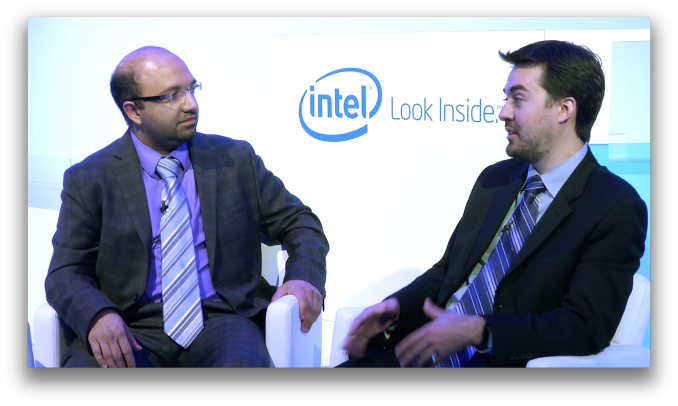



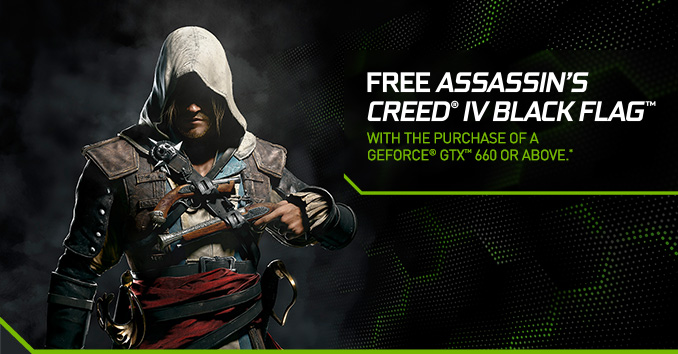
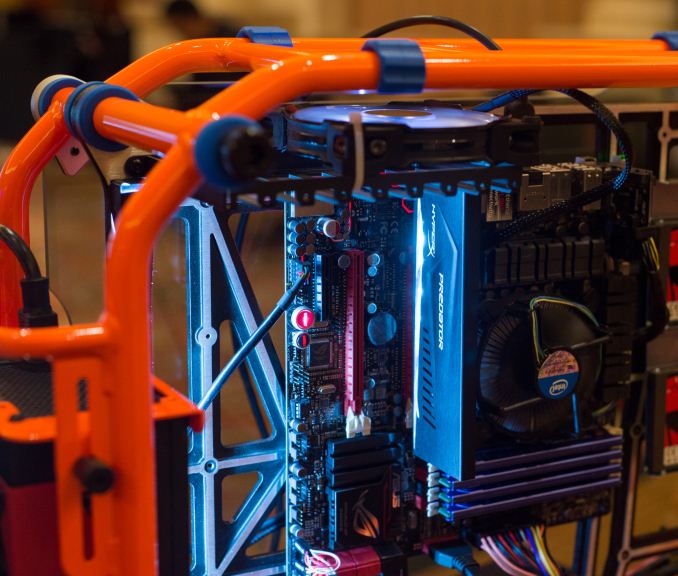

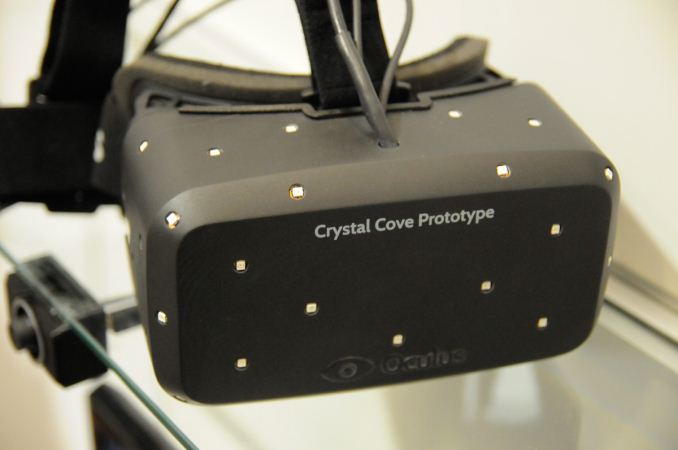
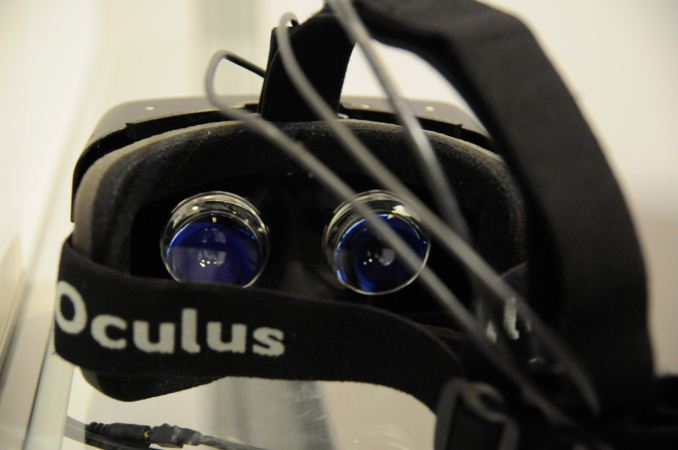
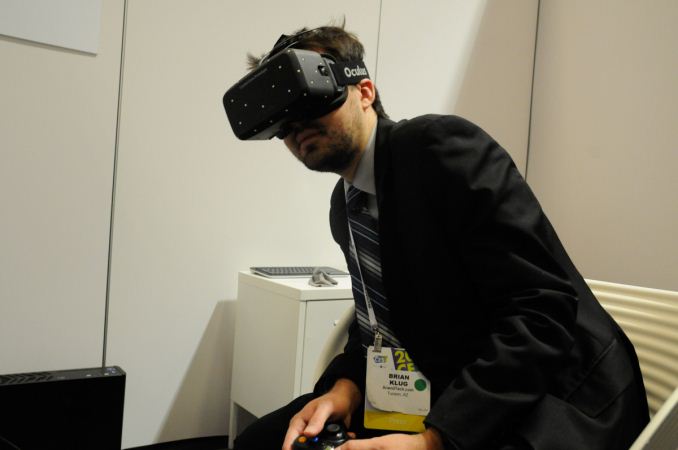
















Bookmarks